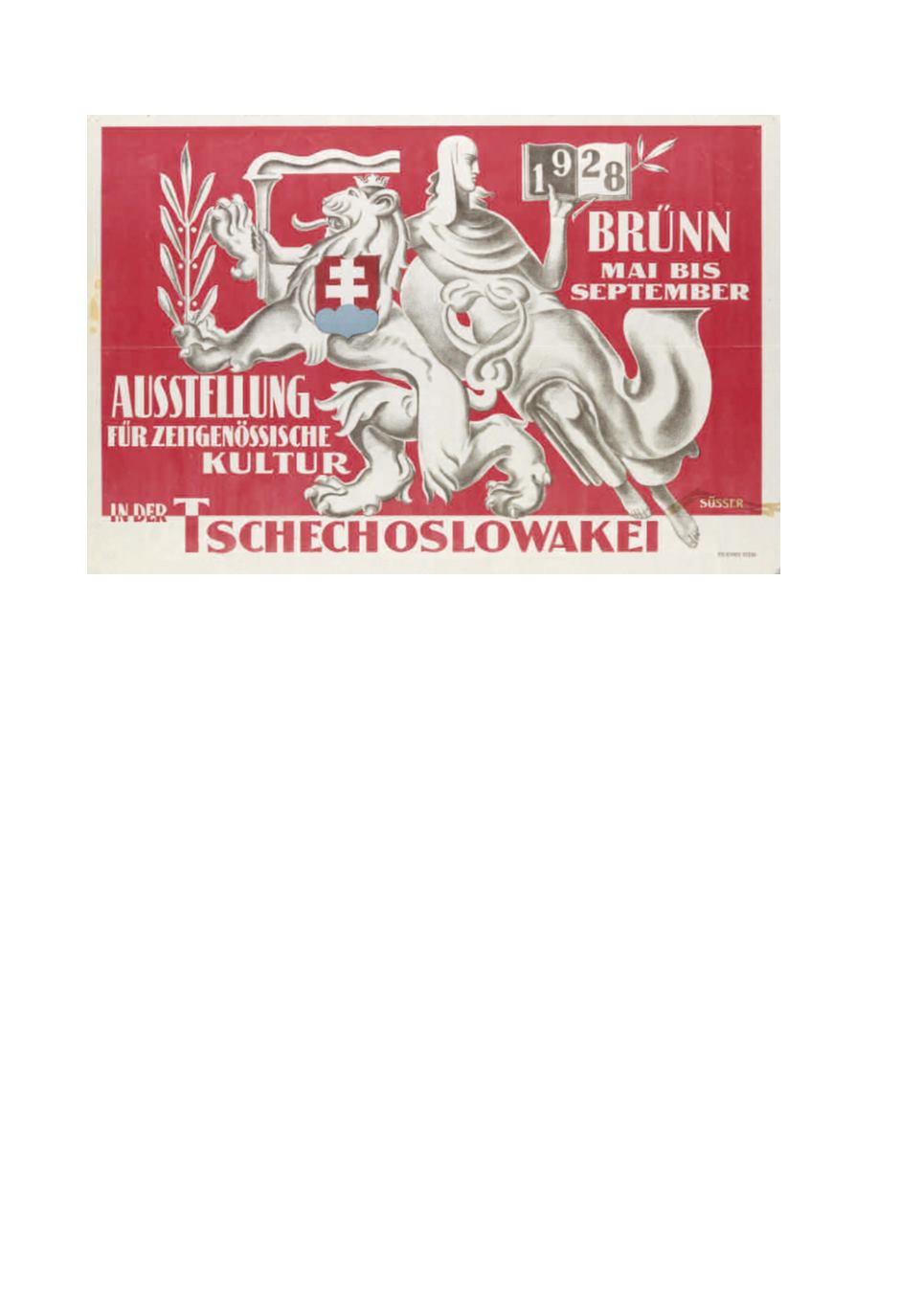

FRANTISEK VACLAV SÜSSER (1890-1956)
103
●
AUSSTELLUNG / TSCHECHOSLOWAKEI. 1928.
24
3
/
4
x37
1
/
2
inches, 63x94
3
/
4
cm. R.M. Rohrer, Brno.
Condition B+: creases, tears, staining and minor losses in margins, some affecting image; creases along
horizontal and vertical folds; tape residue along tear in right margin into image; pin holes in corners. Glued
to board.
By the 1920s, the Czech city of Brno had become an important center of Central European avant-garde.
“An artistic milestone was achieved with the 1928
Exhibition of Contemporary Culture
, which celebrated
the 10th anniversary of the Czechoslovak state’s independence. To celebrate this event, a new, modern
exhibition centre was built” (Trade Fair intro). There was a competition to design the poster for this
exhibition and it was won by Süsser. The poster “depicted the humanist role of culture, using an allegoric
female figure holding a torch and resting against a lion - the symbol of the Czechoslovak state. Also its
large format and the colour palette using the national colors enhance the effective impression” (ibid).
Süsser was a painter, printmaker and poster designer who also taught at Brno’s Arts and Crafts School.
This is the German version. Trade Fair 57 (var).
[800/1,200]
JUPP WIERTZ (1888-1939)
104
●
IN DIE NEUE SAISON . . . / DAMENKONFEKTION / GERNGROSS. Circa 1926.
72
1
/
4
x36
1
/
4
inches, 183
1
/
2
x92 cm. F. Adametz, Vienna.
Condition B+ / B: creases, repaired tears, restored losses, overpainting and minor staining in margins and image;
creases along vertical and horizontal folds; pencil notations and ink stamp in image. Two-sheets. Framed.
Jupp Wiertz was a prolific poster designer based in Berlin. His soft, elegant Art Deco style was perfect
for advertising fashion and tourism, and he stood out from other German designers due to the
“lightness and the surprising facility of his drawing . . . [he] sold dreams and charm, with his elegant
but never vulgar young women” (Weill p. 174). Verfuhrungen 176.
[2,000/3,000]
103
















